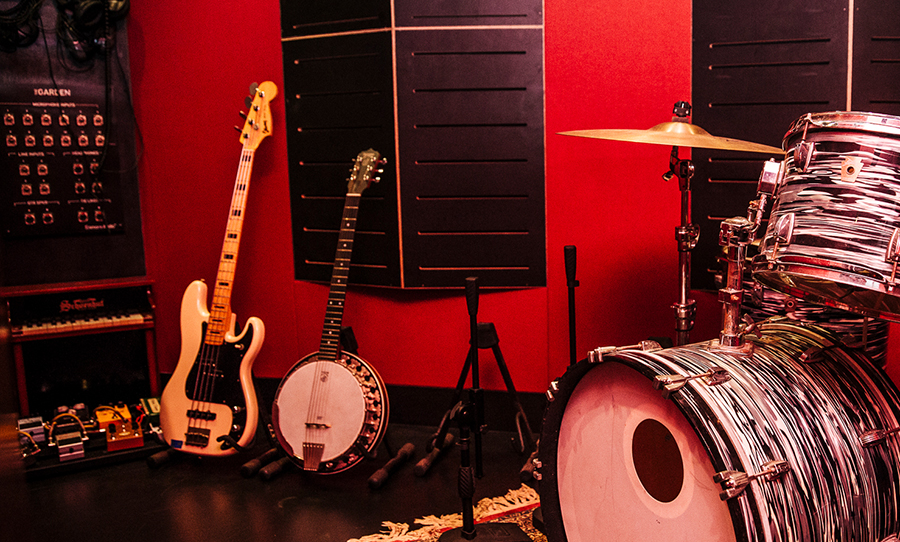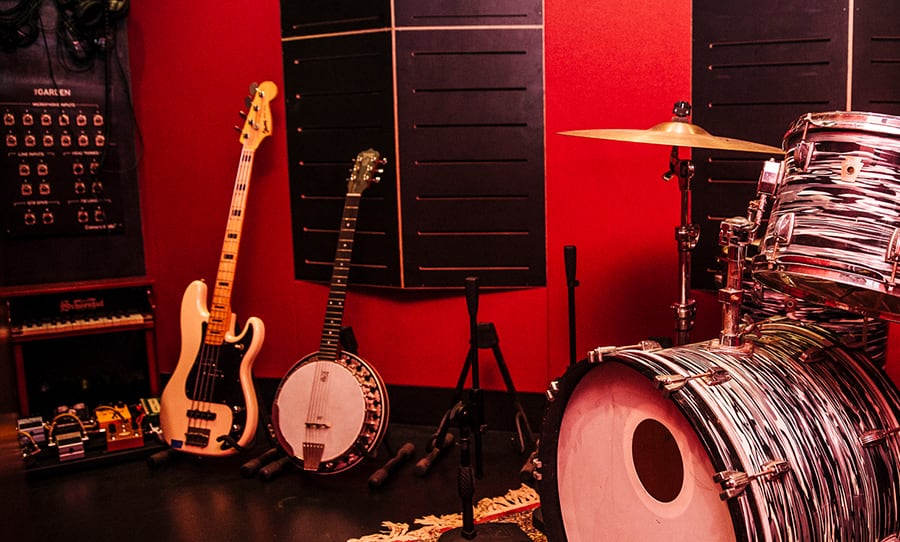Bass is often mysterious, yet always influential in any given piece of music. Locking in with the rhythmic elements of an arrangement, underpinning the harmonic movements, as well as infusing a piece of music with low-frequency energy are all bullet points in the job description of this instrument.
Creating a bespoke identity for it comes with challenges, but it has the potential to transform a whole mix with its own magic. So read on for some strategies for getting the most out of a bass recording.

Getting the bass to cut through and maintain its unique voice is a challenge, but one that can reap massive rewards. We explore a range of methods for getting the most from the bass.
Front End Tone
The bass occupies a different slice of frequency real estate when compared to say, the guitar, or the top half of the keyboard. The spectrum of the guitar is more audible to us and enjoys a lot more variety in terms of effects and nuanced tone shaping options.
The ways that you can alter the way a bass sounds however, should not be underestimated. The kind of strings that you use, for example, are a revelation in the way they can alter its character. Roundwound strings are the most common and will yield a tone that has a slight bite at the front of the envelope, accentuating the attack of the fingers – or pick – on the strings.
Flatwound strings open up a whole new world of subtleties. The softer initial attack creates the impression of additional smoothness and sustain, and the gentle transients created by the fret noise has the benefit of adding a gentle, yet unmistakable “stickiness” to the groove.
And as for the aforementioned pick – this humble tool will have the most dramatic effect on the immediate tone of a bass guitar. For obvious reasons, hitting the string with a hard piece of plastic as opposed to the soft pad of a fingertip will inject a spike of top end transient energy, which will provide instant definition.
Coupling the pick or the finger with a chunk of foam wedged under the strings can exaggerate that punchiness by decreasing the lengthy sustain. In short, some imaginative modifications to the instrument itself can help the bass carve out its own pocket in the mix before applying traditional engineering tools.
Pedals are for Bass Too
Guitarists have long been spoiled for choice when it comes to effects, but the world of bass specific pedals is catching up fast. Time-based and ambient effects like delay and reverb are not hugely favoured; depending on the density of arrangement, these kind of effects are can create unwanted clutter in the bottom end.
More bass relevant choices include compression, distortion and EQ – effects that will enhance the apparent tightness and punchiness of the bass signal.
The Diamond Bass Comp has EQ tilt points that are specifically tailored to more bass friendly frequencies. The Darkglass Alpha Omicron is a drive with a blend control that contains a bell-curve boost control in the top end to offer more cut-through. These are but two of many new options for bass stompboxes.
Divide and Conquer
Post pedals and before preamps, splitting the bass signal between DI boxes and amp heads can be used to create additional tonal characters. If you have a DI that’s especially adept at maintaining a clean and full tone, pairing it with an amp which has the capacity for crunch will give you unique blending options in the mix.
Assuming you have a DI with a thru output, or a splitter box, the amount of choices available is only limited by your imagination – and the amount of inputs you have to spare.
Musical Choices
But, before all that… Making appropriate arrangement choices will have the most impact.
The bass occupies a lot of space in the bottom half of the frequency spectrum and rarely interferes with the higher pitched melodic elements of the arrangement. Thus, exploring more impactful, melodic bass lines is a worthy pursuit.
This doesn’t necessarily mean that the harmonic foundations of the song need to be neglected. If the root notes are lacking, you could consider filling in those gaps with more subliminal textures from a bassy synth patch.
Bass has a reputation for sinking into the background, a utilitarian necessity. Yet the great bass lines of history that so often have a fond place in our memories and are anything but sonic wallpaper. They inject tracks with hypnotic grooves, energy and an easy swagger.
By paying attention to this crucial part of the band, by exploring the different ways that we can carve out a space for it and imbue it with a distinct personality, we can make it truly memorable, which can only elevate the song as a whole.




